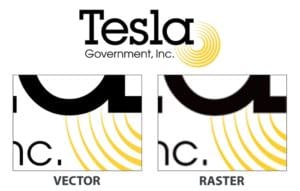 If you have worked with or for any US government agency, you know that sharing “across lines” with other agencies is at best a headache and at worst out of the realm of reality. There are many reasons for this predicament, including long-standing workflows, simple access rules, and perhaps even fear of being redundant. It’s difficult. Failing to collaborate “across lines” deprives you and your partners of information that benefit the entire community.
If you have worked with or for any US government agency, you know that sharing “across lines” with other agencies is at best a headache and at worst out of the realm of reality. There are many reasons for this predicament, including long-standing workflows, simple access rules, and perhaps even fear of being redundant. It’s difficult. Failing to collaborate “across lines” deprives you and your partners of information that benefit the entire community.
Post-9/11, many agencies did, in fact, alter course to enhance information sharing practices, successfully preventing terrorism. In June 2015 the Joint Terrorism Task Force (JTTF) thwarted a plot by Usaamah Rahim to kill police officers. Improved information sharing between federal and local law enforcement played a critical role in disrupting the plot and preventing loss of life.
In spring 2017 the Inspectors General of the Intelligence Community, the Department of Justice, and the Department of Homeland Security published the Joint Review of Domestic Sharing of Counterterrorism Information, a comprehensive review of information sharing efforts across the interagency. The Review discovered many areas where government agencies at all levels need to improve in order to respond effectively to potential threats. It also found that information sharing procedures have been implemented unevenly across agencies, as well as a lack of standardization in reporting and analysis. Without coordination of these efforts, agencies have missed opportunities to maximize their counterterrorism efforts.
Years of mismanaging and hoarding information also need to be addressed. We love to hold onto that which is ours and not have to put our toys in someone else’s sandbox. Improved integration between agencies does not have to result in a loss of sovereignty, but it does mean embracing an element of trust that the other kid isn’t going to destroy (or steal) what’s yours (before kicking sand in your face).
Nevertheless, successful information sharing is possible, and efforts such as the Joint Review and new interagency fuel cells will aid immensely in coordinating cooperation across different agencies, so long as the will for change and collaboration prevails. Other existing platforms are less known, and intelligence leaders would do well to embrace them. If the parties involved refuse to develop compatible processes and develop elements of trust, the status quo will continue.
Even if the steps are baby steps, they are steps in the right direction. And each incremental lurch toward improved collaboration will benefit not just agencies at the individual level, but the United States government as a whole. The time to distrust government partners is over. The time to embrace collaboration is now.
Related posts
Afghanistan Is Finally Holding Elections—While the Taliban Gobbles Up Territory

Vector vs. Raster: What Do They Mean and Which Should I Use?

Out of the Wild: Taming the Information Beast in the Digital Age

Choosing the Right Image for the Web
